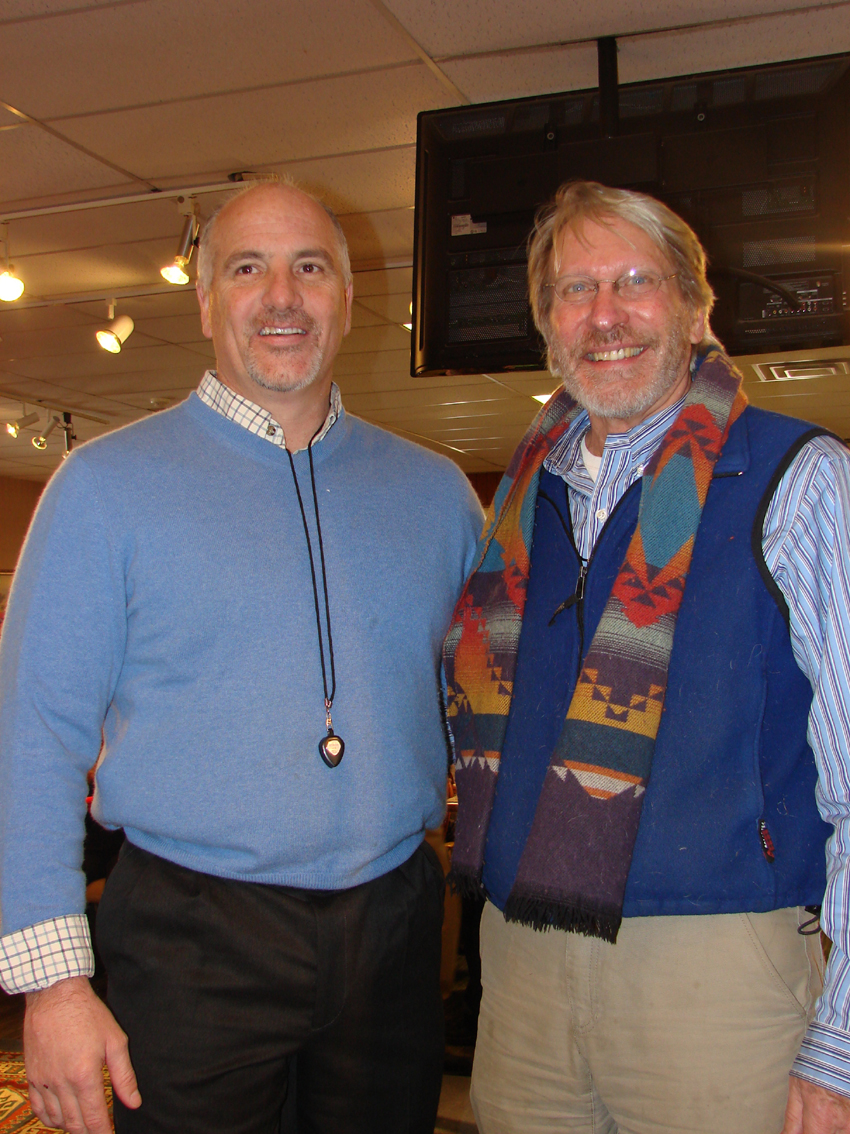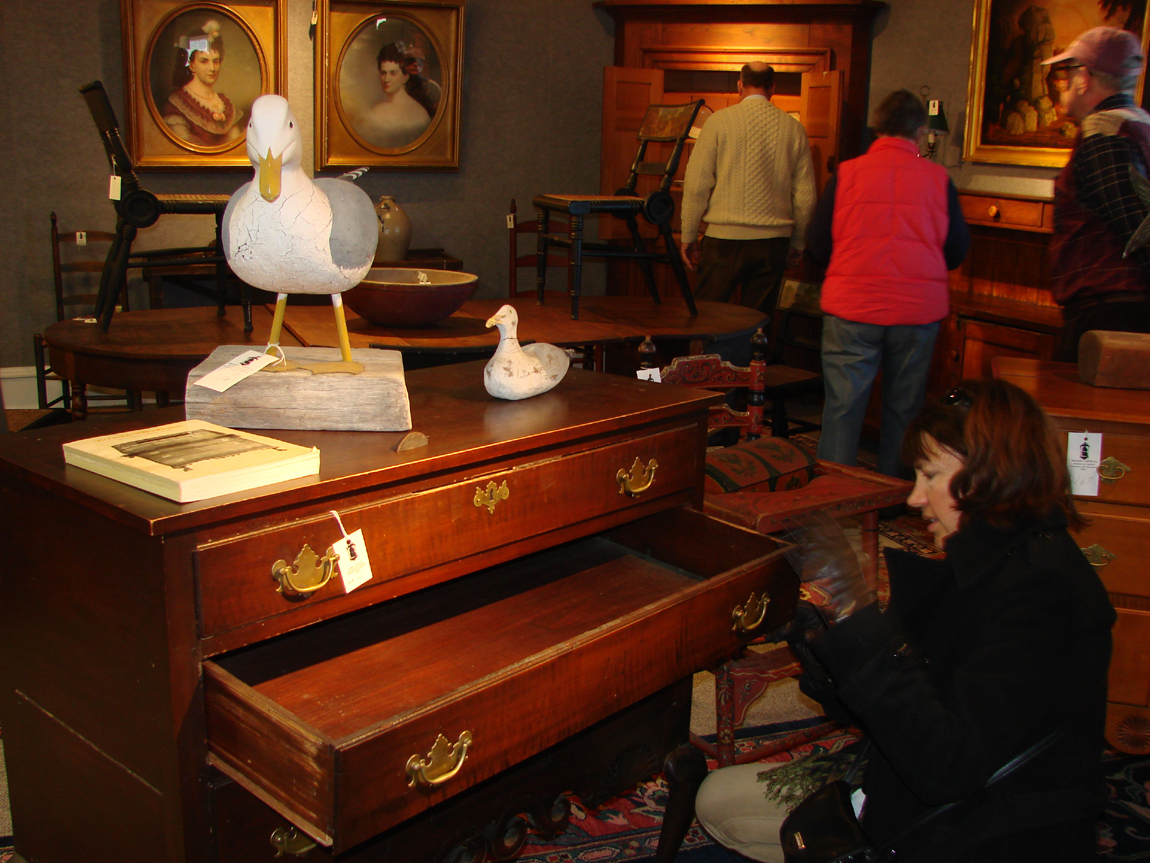Review And On-Site Photos By Rick Russack,
Catalog Photos Courtesy William A. Smith Inc
PLAINFIELD, N.H. — On February 27, Bill Smith’s sale included the collection of John Page, Haverhill, N.H., former executive director of the New Hampshire Historical Society and first executive director of what is now the New Hampshire Preservation Alliance.
Page’s home was a magnificent three-story brick Federal home in Haverhill, just up the road from Plainfield. As you might guess, he had a deep interest in New Hampshire and much of what he collected originated in New Hampshire, and a good deal of it had connections to Haverhill. Page realized the importance of provenance and many of his pieces came with his research notes on the object. He was well known locally and several of his pieces were purchased by local residents.
To promote this sale, Smith conducted a full-day preview at the home in Haverhill with staff on hand to discuss the collection with attendees. Peter Sawyer, Exeter, N.H., dealer and longtime friend of John Page, told Antiques and The Arts Weekly that Page himself would have loved the event. Sawyer said that Page was passionate about antiques, especially those from the Northern Connecticut River Valley, and did as much as he could to inform others about the craftsmen of that region. Sawyer said that Page was not a wealthy person and that the collection was assembled on a limited budget.
Smith’s auctions do not offer Internet bidding, so the salesroom was packed. The staff had to add 130 additional chairs to the room, and still many bidders were standing. A total of 483 buyers registered for the sale, which grossed $534,750. Smith’s sale listing does not include estimates and he does not post prices realized online after the sale, preferring to protect the buyer’s privacy. His sales draw many retail buyers.
American furniture performed well, especially pieces with New Hampshire provenance. Folk art and paintings, ceramics, clocks and woodenware also did well. The top lot of the day was a small desert landscape with two figures, signed by Albert Bierstadt (American, 1830–1902), which finished at $15,525. Smith said he was uncertain of the painting and said that the buyer had 30 days to have the painting authenticated. It sold to a buyer in the room, Kurt Need from Newburyport, Mass., who said that he would have the painting examined. Need noted he came to the auction specifically for the painting.
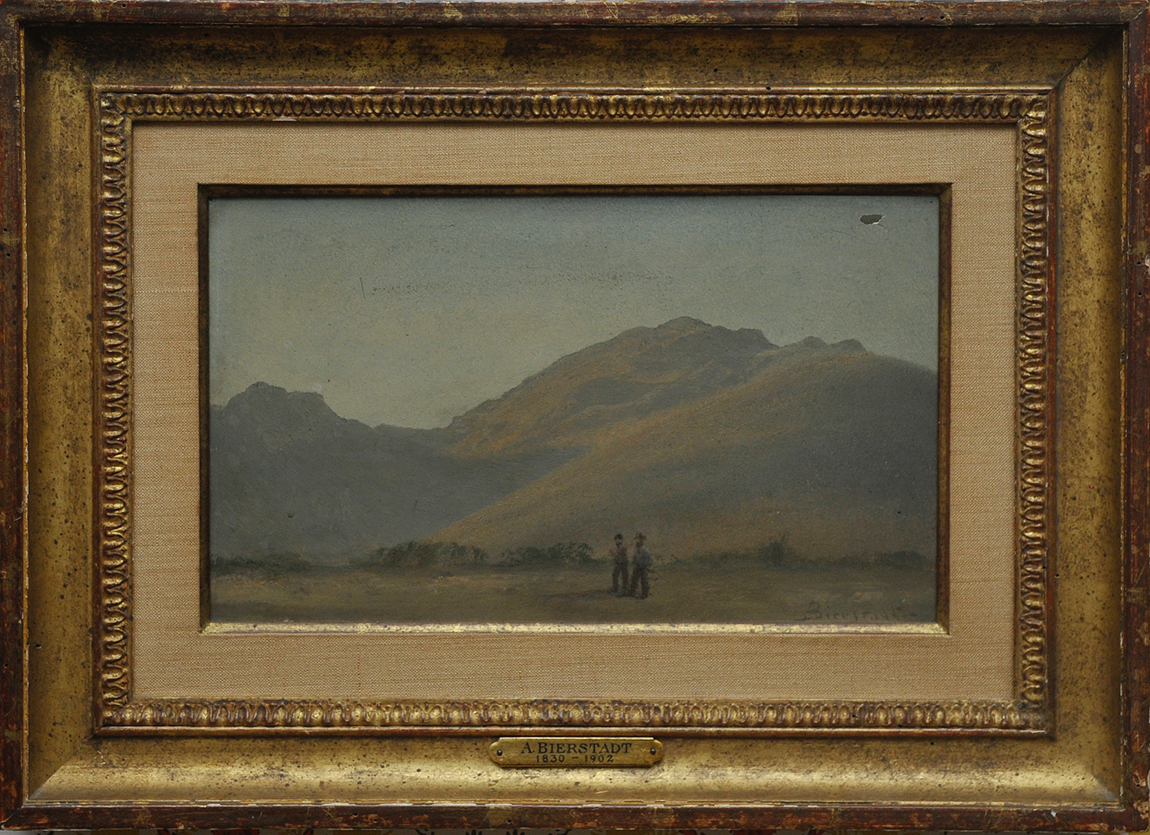
The highest priced lot of the day was this small desert landscape signed A. Bierstadt. Smith told the audience that the buyer would have 30 days to have the painting authenticated and the buyer, who came just for this painting, said that he would do that. It fetched $15,525.
As a whole, American furniture did better than it has at some recent auctions. A New Hampshire Chippendale birch graduated six-drawer tall chest brought $2,875. A set of six Baltimore painted chairs, with turned legs and landscape scenes, circa 1830, finished at $3,450. This set had unusual rear joint supports where the top of the rear legs intersects with the side rails, a bold turned circular element, presumably adding both strength and decoration. Another unusual set of six classical dining chairs, circa 1830, with very unusual shield-shaped backs on tapered legs, fetched $2,415. A Federal rolled-arm China Trade sofa with caned seat and back, went for $1,265.
Bringing the top furniture price of the day, from the Page estate, was an exceptional New Hampshire Federal sideboard with oval and banded bird’s-eye maple veneer on double tapered legs, circa 1800–20. Page’s notes indicated that the piece was probably made in Haverhill or Bath, N.H., for a brick house built about 1816 in Upper Bath, N.H. He noted that the house was built for a lawyer, Ira Goodell, and remained with the house until the auction at which Page purchased it. The documentation undoubtedly helped the sideboard achieve $8,050. It was purchased by Ken Kinder, a collector who said that it was going back to Haverhill. A two-part Federal drop front lady’s secretary with reeded ends and legs, period brass, signed by S.A. reached $2,300. The initials are those of Steven Adams, a cabinetmaker in Haverhill, circa 1820.
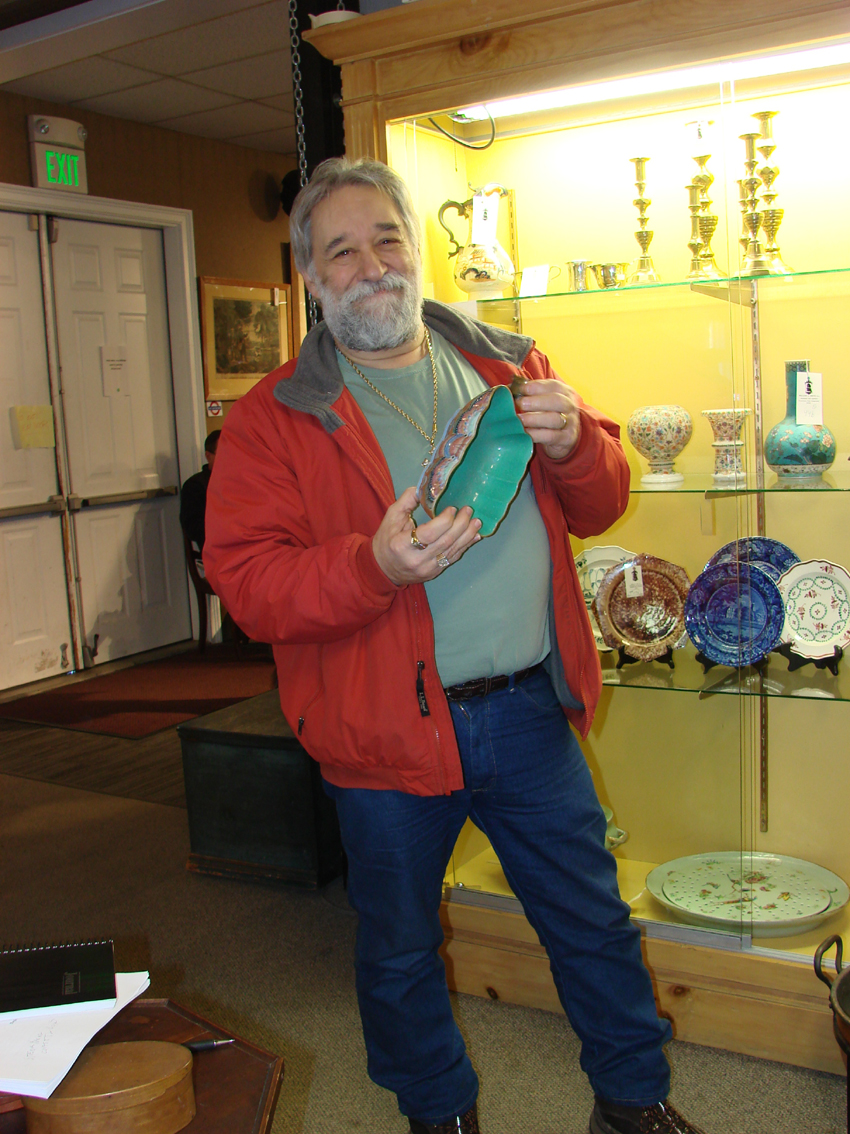
Steve Young, Coast to Coast Antiques, Newport, N.H., has been successfully selling good stuff online for more than 20 years.
The Page home had some nice clocks. A Federal period tall case clock with a birch case, with inlay on the door and inlaid quarter fans and an unusual fret-work top, achieved $5,462. The dial was signed by Elisha Smith, Sanbornton, N.H. Page had consigned the clock to Peter Sawyer, Exeter, N.H., clock specialist, who returned it after Page’s death. From the same home, a banjo clock with original floral tablets, made by B. Morrill, Boscowen, N.H., realized $6,037. A New Hampshire dwarf clock from Peterborough went out at $1,265.
“Life on The Hudson,” a well-done Hudson River landscape, earned $6,900. It included a house said to be that of Thomas Rossiter, a prominent Hudson River school painter. Rossiter (American, 1818–1871) is best known for his “Picnic on the Hudson,” which belongs to the Butterfield Library in Beacon, N.Y. That painting has been appraised at $1 million, perhaps making Smith’s example quite a buy if it can be established that this painting was done by Rossiter. Smith said that his research indicated that the particular scene was a popular view that had been painted by several Hudson River school painters.
Early in the sale, a pair of miniature portraits of Nineteenth Century gentlemen, one signed by W.H. Miller New York, 1842, sold for $3,450. According to Elle Shushan, who specializes in miniatures, signed and dated examples by Miller (American, 1836–1860) are scarce. A double silhouette of Nancy and Samuel Kaine, Barnstead, N.H., attributed to William Chamberlain (American, 1790–1860), along with another identified silhouette from Barnstead, brought $2,875. A small marine scene, “Sailing Ship and Stormy Seas,” signed Buttersworth made $1,955.
In addition to paintings, there were some good lithographs. A popular White Mountains print advertising the Pemigewasset House in Plymouth, N.H., by J.H. Bufford, brought a strong $3,450. The hand colored print depicted the grand hotel, with a train, a stage coach, vacationers and assured travelers that it was a stepping off point to “the shortest and most direct route to Franconia in the White Mountains.”
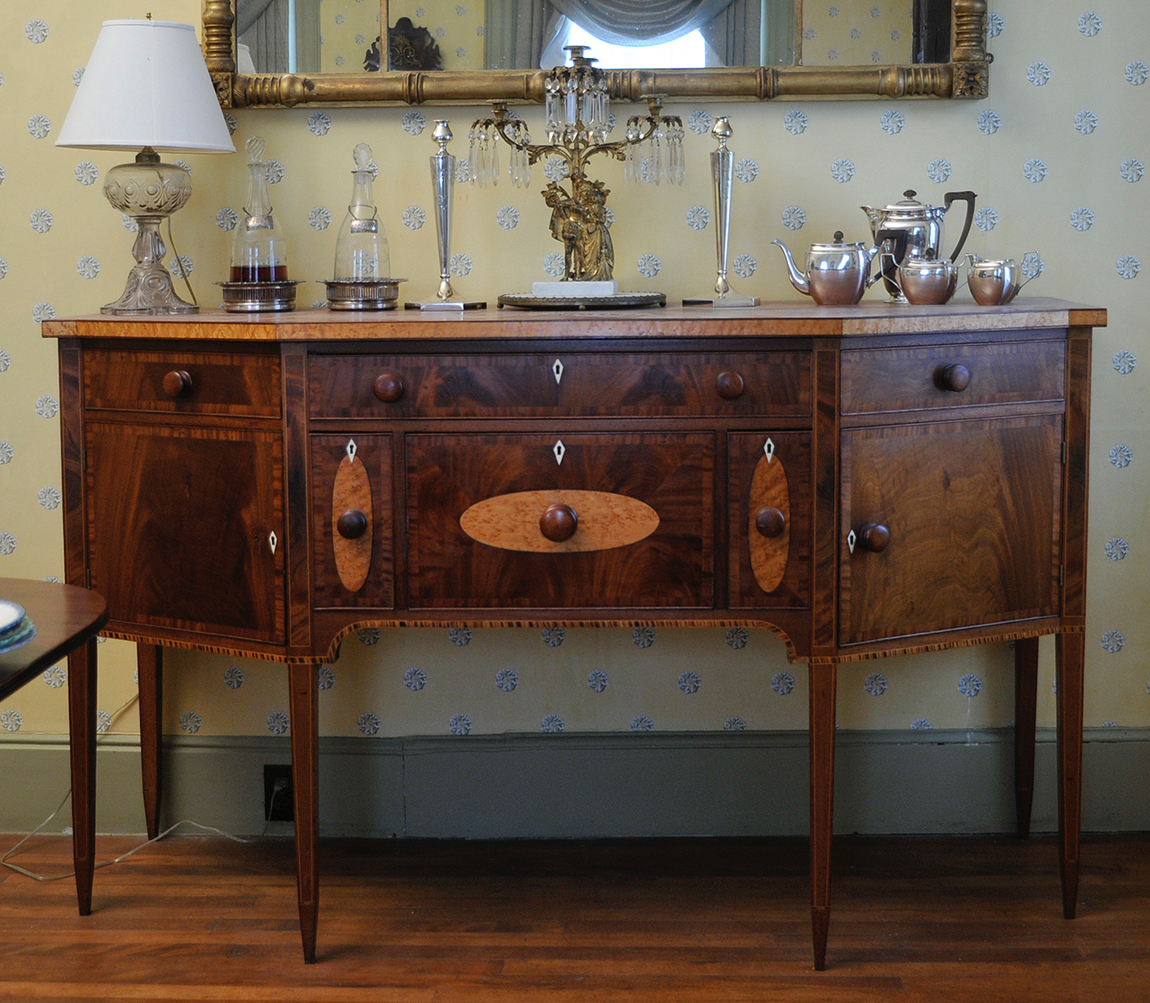
From the Page home in Haverhill, N.H., possibly made in Haverhill, the inlaid Federal sideboard sold in the room to a customer who said he was taking it back to Haverhill. With bird’s-eye maple inlays and on tapered legs, it reached $8,050.
An unusual print, circa 1860, depicting the “Depot and Offices of the American Express Company, Hudson, Jay and Staples St” in New York seemed reasonable at $747. It was a busy street scene with pedestrians, horse-pulled express wagons and a militia unit on parade. It identifies the architects as Jay Spear and John Rich. A copy hangs in the New-York Historical Society. A large Currier and Ives folio, “Snipe Shooting,” circa 1852, seemed like a bargain at only $230. A copy sold at a Northeast Auction last year for $1,800. Smith said that he had not examined the Currier and Ives out of the frame.
The sale included some other surprises. A lapped butter churn, in an old, dark green paint, brought $1,610, and a lapped swing handled bucket, in old red, went for $1,092. A Canadian two-door cupboard, with raised panel doors, in old blue, realized $2,875. Its back had been covered with wallpaper, perhaps indicating that it was used as a room divider at some time. A 12-inch Joel Ellis doll with pewter hands, made in Springfield, Vt., sold with another doll for $1,115. A Nineteenth Century Chinese export celadon covered warming platter, 16 inches long, finished at $805. The same buyer took a matching soup tureen at $977 and a platter with a meat strainer at $862. A mocha jug with seaweed decoration achieved $920. A very bright linsey-woolsey bed cover in blue and tan went for $2,300.
Smith also was commissioned to sell Page’s home in Haverhill, built in 1810. At the time, Haverhill was the county seat of Grafton County and its courthouse drew lawyers and others with business before the court. When built, the house served as the Grafton Hotel and is pictured in the December 2004 issue of The Magazine Antiques. Smith was offering the house at $250,000 without a buyer’s premium. It did not sell, but there have been serious inquiries since the auction.
After the sale, Bill Smith told Antiques and The Arts Weekly, “It was refreshing to see that level of interest. We haven’t had a crowd like that for quite awhile and the activity was like the old days.” When asked if there were any surprises, he mentioned a collection of New Hampshire license plates that sold near the end of the sale. “It brought $6,900 and included every plate between 1912 and 1973. It came from the Page estate and John Page’s father had been a Ford dealer. That may be where the collection came from.”
All prices reported include the buyer’s premium.
For additional information, www.wsmithauction.com or 603-675-2549.

